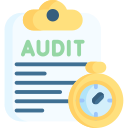Why Technology Audits Matter Now
A technology audit maps servers, data flows, and access rights to concrete loss scenarios like fraud, outages, and regulatory penalties. By linking technical controls to balance-sheet impact, leaders gain clarity and prioritize investments. What exposures would you quantify first in your environment?
Why Technology Audits Matter Now
Every institution relies on fragile chains: APIs, third-party vendors, legacy scripts. Audits uncover single points of failure and latent capacity limits before stress hits. This visibility turns surprises into planned fixes. Share an unexpected dependency you discovered at an inconvenient moment.










